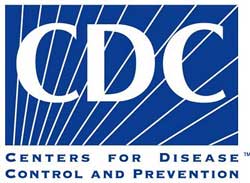PulseNet, a network coordinated by the Centers for Disease Control and Prevention (CDC) has prevented about 276,000 cases of food poisoning in the U.S. every year, according to new research published in the American Journal of Preventive Medicine. Every time there is an outbreak, we mention this organization, which matches DNA of pathogenic bacteria to any illnesses in its database.
 PulseNet began 20 years ago, linking public health labs in this country so details about E. coli, Salmonella, Campylobacter, and Listeria monocytogenes outbreaks can be shared quickly. The illnesses this organization has prevented could have cost the U.S. $507 million in medical bills and lost productivity.
PulseNet began 20 years ago, linking public health labs in this country so details about E. coli, Salmonella, Campylobacter, and Listeria monocytogenes outbreaks can be shared quickly. The illnesses this organization has prevented could have cost the U.S. $507 million in medical bills and lost productivity.
The study was conducted by Dr. Robert L. Scharff, Dr. John Besser, Dr. Donald Sharp, Dr. Timothy F. Jones, Dr. Gerner Smidt Peter, and Dr. Craig Hedberg. Scharff said that PulseNet has encouraged businesses to better police themselves to avoid outbreaks, which can be very costly to business in terms of perception and money.
PulseNet broke the story of the Listeria monocytogenes outbreak linked to Blue Bell Ice Cream last year. Using PulseNet, public health officials matched DNA “fingerprints” of rare Listeria isolates from ill Kansas patients to those found in Blue Bell ice cream samples.
The study looked at data from 1994 to 2009 and assigned a value to illnesses prevented. By comparison, PulseNet costs about $7 million a year. The network is made up of 83 federal and state labs. Every time a reportable bacterial illness is diagnosed, samples of the bacteria’s DNA is sent to PulseNet. The data states that PulseNet finds 1,750 clusters of illness a year.
Foodborne illnesses sicken 48,000,000 Americans every year. Of those, 128,000 are hospitalized and 3,000 people die. The breakdown of illnesses prevented by pathogen are: 266,522 illnesses from Salmonella, 9,489 illnesses from E. coli, and 56 illnesses from Listeria monocytogenes.
In addition to those prevented illnesses, improved recalls reduce illnesses as well, leading to $37 million in costs averted. PulseNet’s specific objectives are to detect foodborne disease cases clusters through comparison of pulsed field gel-electrophoresis patterns, and to allow for real-time communication between federal, state, and local health departments. The agency also facilitates early identification of outbreaks and helps regulatory agencies identify areas where new measure implementation is likely to improve the safety of the food supply.
The study does not include all economic costs that may be related to foodborne illness outbreaks. Losses from premature death and reduced quality of life due to complications from foodborne illnesses were not monetized, but could be very large.




